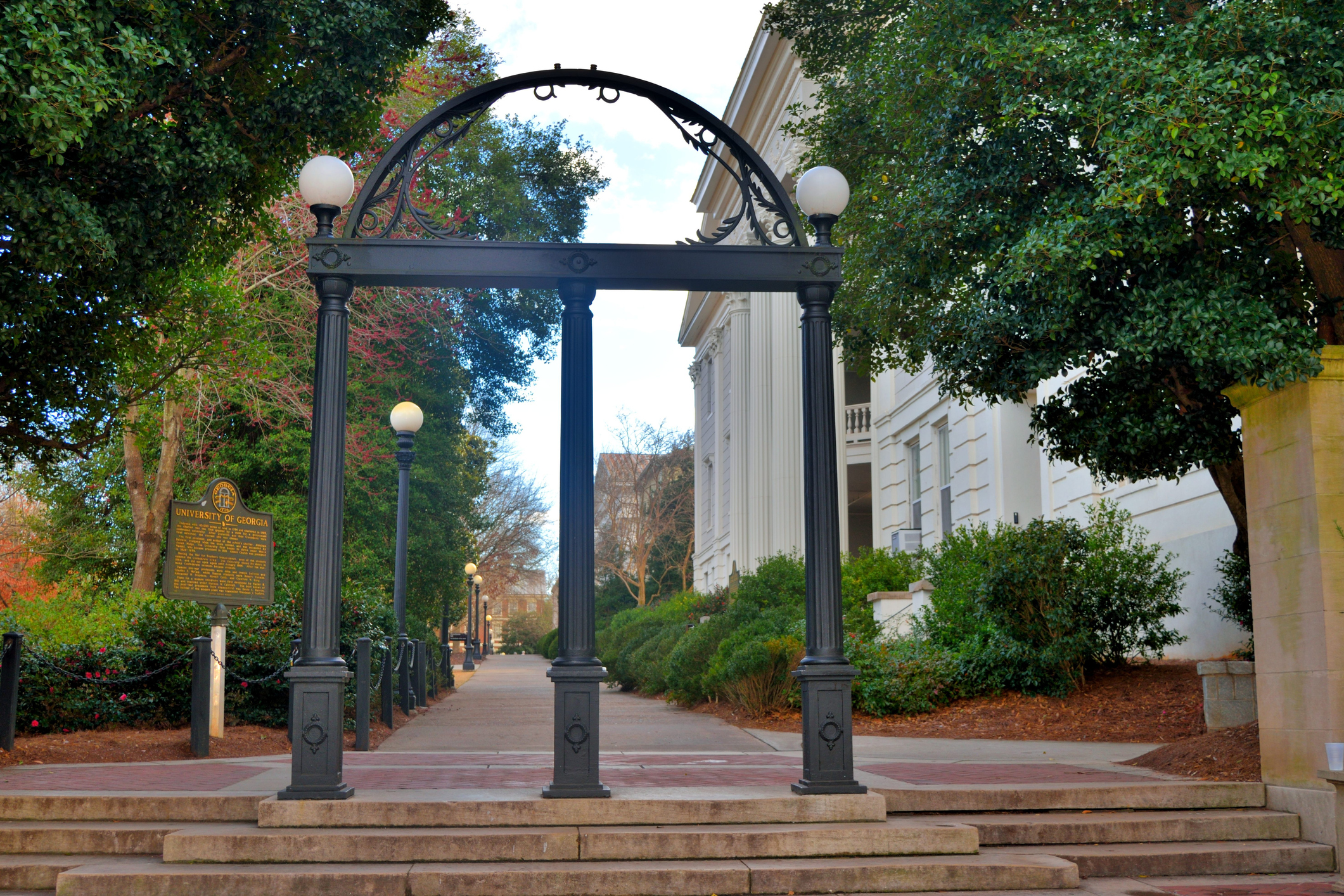Where to Find the Cheapest In-State Tuition For College
These states have the cheapest average cost of in-state tuition for public four-year institutions.


Choosing where to attend college involves many factors, one of which is cost. CollegeBoard reports that the average published tuition and fee for 2022-23 is 2.25 times higher than it was 30 years ago at public four-year institutions, increasing from $4,870 to $10,940 since 1992-93. And with in-state tuition this high, going out of state to attend college can be out of the question for many, as out-of-state tuition can cost double the amount of tuition paid by in-state students.
The average cost of in-state tuition varies between states, ranging from $6,370 in Florida, $6,440 in Wyoming, $17,020 in New Hampshire and $17,650 in Vermont, according to CollegeBoard. Here are the nine states with the cheapest average in-state tuition for public universities, if you're looking for ways to increase your child's tuition ROI.
Cheapest States for In-State College Tuition
The following states have the cheapest average cost of 2022-23 in-state tuition and fees at public four year institutions, per CollegeBoard.
From just $107.88 $24.99 for Kiplinger Personal Finance
Become a smarter, better informed investor. Subscribe from just $107.88 $24.99, plus get up to 4 Special Issues

Sign up for Kiplinger’s Free Newsletters
Profit and prosper with the best of expert advice on investing, taxes, retirement, personal finance and more - straight to your e-mail.
Profit and prosper with the best of expert advice - straight to your e-mail.
9. Nevada

In-state Tuition and Fees: $8,590
Nevada’s state colleges and universities include Nevada State College, located in Henderson, only 15 miles from the famous Las Vegas Strip, the University Of Nevada, Las Vegas, and the University Of Nevada, Reno.
8. New York

In-state Tuition and Fees: $8,560
Notable public colleges in New York include University at Buffalo, SUNY at Binghamton and Stony Brook University. The state is also home to the United States Military Academy, located in West Point.
7. Georgia

In-state Tuition and Fees: $8,330
Located in Athens, the University of Georgia is the state’s oldest institute of higher education, with the motto "to teach, to serve, and to inquire into the nature of things." The state is also home to Georgia Institute of Technology and Georgia State University, the largest college in Georgia.
6. Idaho

In-state Tuition and Fees: $8,180
The University of Idaho, the state’s land-grant research university, has a mission to “shape the future through innovative thinking, community engagement and transformative education,” and has been ranked the most beautiful campus in Idaho. The state’s other public universities include Boise State University, the largest university in Idaho, and Idaho State University.
5. Utah

In-state Tuition and Fees: $7,660
Utah State University, located in Logan, is one of 146 colleges in the nation with the Carnegie R1 classification, making it one of the highest level research institutions in the country. The state is also home to the University of Utah, located in the state’s capital, Salt Lake City.
4. Montana

In-state Tuition and Fees: $7,460
Notable colleges in Montana include the University of Montana and Montana State University, both top-tier research universities.
3. North Carolina

In-state Tuition and Fees: $7,360
North Carolina State University is the largest university in the Carolinas, with more than 36,000 students. It was ranked the No. 1 college in North Carolina and also No. 10 in the nation for undergraduate entrepreneurship. The state is also home to the University of North Carolina at Chapel Hill.
2. Wyoming

In-state Tuition and Fees: $6,440
The University of Wyoming is located in Laramie and is surrounded by the rugged Rocky Mountains. The university’s mission is to “honor our heritage as the state’s flagship and land-grant university by providing accessible and affordable higher education of the highest quality.”
1. Florida

In-state Tuition and Fees: $6,370
The oldest continuous site of higher education in Florida is Florida State University, founded in 1851. The school “preserves, expands, and disseminates knowledge in the sciences, technology, arts, humanities, and professions, while embracing a philosophy of learning strongly rooted in the traditions of the liberal arts.” The University of Florida is also another notable four-year public institution in the state.
The Value of a College Education
Despite the cost, a college education can pay off in the long run, as earnings generally increase more with education. The Georgetown University Center on Education and the Workforce found that individuals with a bachelor’s degree earn a median of $2.8 million over the course of their career, or an average annual earning of about $70,000, which is 75% more than those with just a high school diploma.
Additionally, those with a master’s degree earn 14% more ($80,000 in average annual earnings) than the median for bachelor's degree holders, and doctoral degree holders earn 43% more ($100,000 in average annual earnings) than those with a bachelor’s degree.
Qualifying for In-State Tuition
A big factor in deciding whether or not to go to college in state or out of state is cost. Out-of-state tuition can cost double, or even triple, the cost of in state tuition.
If you attend a college or university in your state of residence, you’ll need to provide proof of residency to qualify for in-state tuition. Residency requirements vary between states, but most states require you to live there for 12 consecutive months before starting school. If you’re a dependent, your residency status is typically tied to your parent(s), so they will also need to show proof of domicile.
Since public universities receive a good deal of their funds from taxes paid by in-state residents, if you attend university out of state, you won't be eligible for cheaper tuition offered to residents.
Profit and prosper with the best of Kiplinger's advice on investing, taxes, retirement, personal finance and much more. Delivered daily. Enter your email in the box and click Sign Me Up.

Erin pairs personal experience with research and is passionate about sharing personal finance advice with others. Previously, she was a freelancer focusing on the credit card side of finance, but has branched out since then to cover other aspects of personal finance. Erin is well-versed in traditional media with reporting, interviewing and research, as well as using graphic design and video and audio storytelling to share with her readers.
-
 Dow Adds 646 Points, Hits New Highs: Stock Market Today
Dow Adds 646 Points, Hits New Highs: Stock Market TodayIt was "boom" for the Dow but "bust" for the Nasdaq following a December Fed meeting that was less hawkish than expected.
-
 5 Types of Gifts the IRS Won’t Tax: Even If They’re Big
5 Types of Gifts the IRS Won’t Tax: Even If They’re BigGift Tax Several categories of gifts don’t count toward annual gift tax limits. Here's what you need to know.
-
 The 'Scrooge' Strategy: How to Turn Your Old Junk Into a Tax Deduction
The 'Scrooge' Strategy: How to Turn Your Old Junk Into a Tax DeductionTax Deductions We break down the IRS rules for non-cash charitable contributions. Plus, here's a handy checklist before you donate to charity this year.